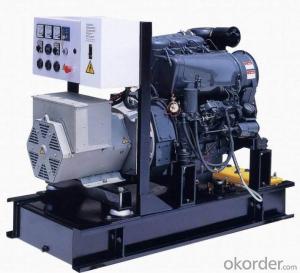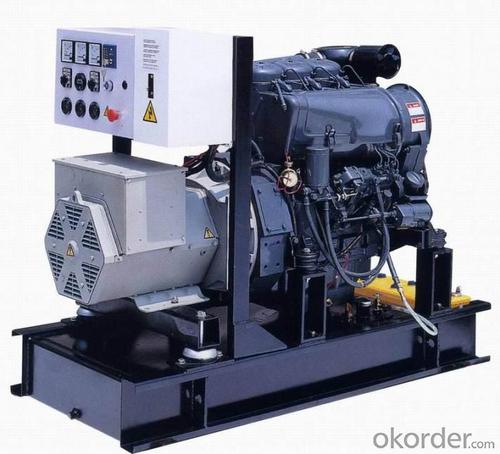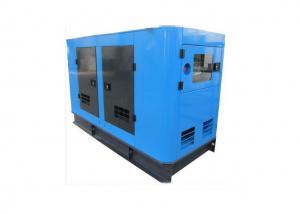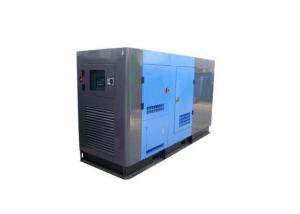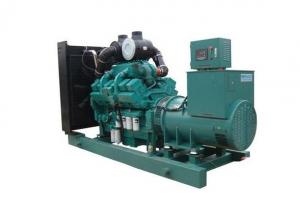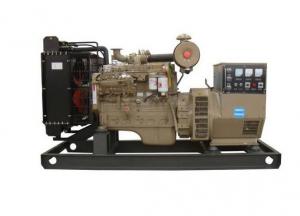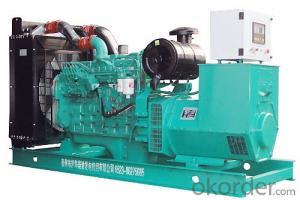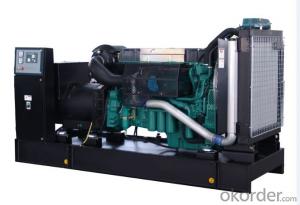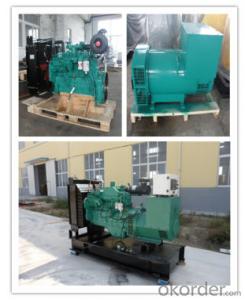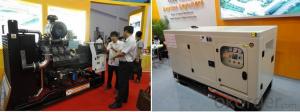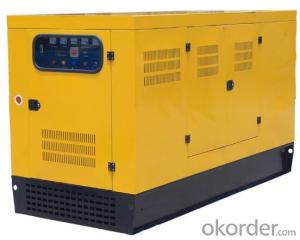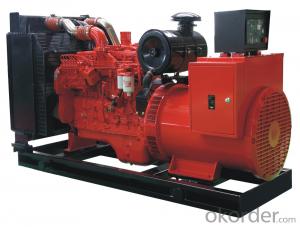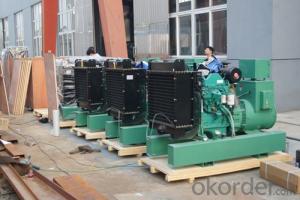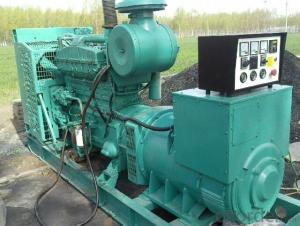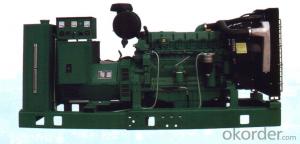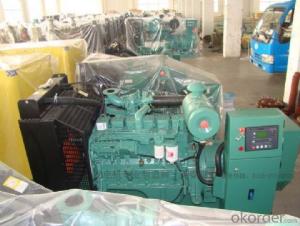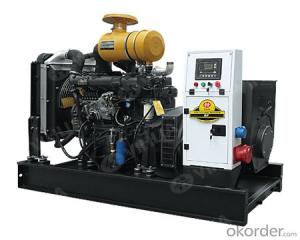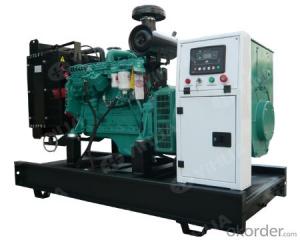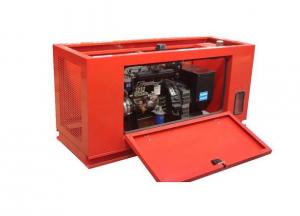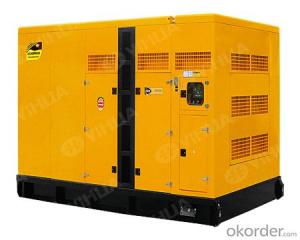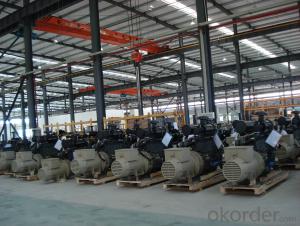Factory price china yuchai diesel generator sets 320kw
- Loading Port:
- Shanghai
- Payment Terms:
- TT OR LC
- Min Order Qty:
- 1 unit
- Supply Capability:
- 300 unit/month
OKorder Service Pledge
OKorder Financial Service
You Might Also Like
Specifications
open type dioesel generator with yuchai enginee
1) Factory direct sale
(2) CE, ISO9001 quality
Power range | 18-650KW |
Engine | All series powered by Yuchai engine |
Alternator | All series owning alternator options of Stamford/Marathon/ENGGA |
Controller system | Hanging control box, automatic control module Smartgen HGM6310 |
Base frame | International channel steel welded base, inbuilt composite damping system; sandblast, acid-washing, antiseptic treatment |
Radiator | Standard genset-joining radiator of 40 °C ambient temperature |
Diesel generator Powered by Yuchai Engine,which yuchai is a large state-owned enterprise and a Nasdaq listed company in USA (NYSE:CYD). Its main business covers diesel engine, contruction machinery, vehicle parts. The engines produced by Yuchai include series YC6G, YC4G, YC4E to which American technology applied, series YC6A, YC6B, YC6J, YC4B, YC4D, YC4F, YC4W to which German technology applied, and YC6M series in which world top technology integrated, totally 12 series.
| YUCHAI Series | Power(KW) | Power(KVA) | Jichai Engine Model | Cylinder NO. | Fuel consumption g/kw.h | DimensionL*W*H | Weight KG |
| FKS-Y330 | 330 | 200 | YC6G245L-D20 | 6 | ≤195 | 2500*970*1500 | 2300 |
- Q: I live in a town home community. The person who loves immediately behind me (the backs of our homes face each other,) has been running a generator from 8am to 10pm every single day for the last two weeks. It is driving me up a wall. It's right outside my bedroom and kitchen. I have complained to the HOA and the town but nothing has been done. He is using a generator to power his whole house because they ran up their electric bill over the winter, didnt pay, and now can't afford to have it turned back on. Is running a generator even efficient? I imagin e spends more on gas every day then he would electric. Why not just sell the generator to pay the bill???
- I am having the same problem with a Neighbor. also to add they could be living there illegally and squatting on the property. Also they could be a grow house and a big sign of a grow house is a big electric bill. So they will probably grow stuff off the Grid and not get caught for a while because the electric bill is not high. I would also agree keep Tabs on your Gas and watch your Fuel Level and if it drops fairly quickly then that is a problem.
- Q: A) what are the pros cons of each system?B)Also what are the operational loss in each case?
- Hydro electric is cheaper, cleaner and most cost effective. There is no operational loss because the fuel (flowing water) is free
- Q: HI FROM NEW ZEALAND.I HAVE A LISTER-PETTER 16 KVA DIESEL 3 PHASE GENSET WITH SINGLE PHASE SOCKET @ 240 VAC. WITH A ITALIAN ELECTRONIC DIAGNOSTICS CONTROL PANEL WITH BREAKERS ETC.WHEN RUNNING A ESAB CADDY PROFESSIONAL 140 INVERTER WELDER @130 AMPS USING 4 MM HARDFACING RODS, ON FIRST STRIKE THE GENSET CUTS OUT AND DIE.WHEN USING A COPPER WOUND TRANFORMER WELDER THE THING RUNS WELL BUT WILL NOT STOP WHEN I HIT THE KEY TO TURN OFF OR EMERGENCY STOP BUTTON.NOTE; THIS IS A STANDBY GENSET IN THAT I JUST PLUGGED IN A WELDER, THE GENSET IS NOT A DEDICATED WELDING GENERATOR.I USED OTHER DIESEL GENSETS PRIOR WITHOUT ANY PROBS.WILL ANY1 HAVE ANY CLUES? REGARDING THIS.THANKS IN ADVANCE.CHEERS CARL GIN
- Does the Esab welder have high frequency? If so the high freq. is feeding back into the generator and frying the electronics. You may need to have the generators repaired. The only way to prevent damage is to turn the high freq. off, or drive an earth ground as close to the welder as possible and you have to run a wire to your grounding clamp to this ground and the machine ground needs to go to this also. You have to get the high freq. out of the circuit as quick as possible. (I have a Hobart Champion Fabshop that is notorious for this.)
- Q: I own a 2300 square foot home with an upstairs and downstairs heatpump. If I wanted to buy a generator to use in the event my power went down what size should I shoot for. I would like to be able at a minimum to provide upstairs heat (1000 square feet), maintain the fridge and provide minimal light at night. Basic survival type stuff. Also how much fuel would normally be consumed running for 24 hours?Thanks I know this is vague so generalities are fine.
- Your okorder
- Q: Frequency meter
- A frequency meter may have different meanings to people in different fields, though they are related. In electrical situations there are the vibrating reed types seen of generator power boards. These are simply connected across the mains like a voltmeter. These indicate when the mains is close to the desired frequency. They help with setting the RPM of a diesel generator. In radio and electronics applications it is more likely to be called a frequency counter. It has a digital counter, a frequency reference and a time base counter. It measures frequency by counting the input signal for a specific time. They are often able to measure time intervals too. These can be very precise, especially using precision external references. Connections. Connect to the signal to be measured as appropriate, so for lower frequencies the connection is something like an audio cable with clip leads. This can load the circuit under test. A divide by 10 oscilloscope probe is useful to reduce this loading. Frequency meters for higher frequencies like VHF, UHF and microwave often have a 50 ohm input, and are designed to be connected via a coaxial cable, terminated at the input of the instrument. There has to be an arrangement to tap power off the device being measured. Safety Precautions. The most important safety precaution is to keep the voltage or power at the input to a level that will not cause damage. The lower frequency types may have a voltage rating, and the 50 ohm types have a power rating. A suitable kind of attenuator is needed if the voltage/power is too high.
- Q: I have 6,500 gas generator to run two 12,500btu roof a/c units on my bus.Nothing but problem after problem with generator.I was advised to change unit out to diesel unit! Any advise on what size i should be looking for?
- You don't say what the generator problems are. It may be undersized for the AC units you are trying to run plus other things you are trying to run. The AC unit may require all of the generator's capacity for about 2 seconds to start. So if one AC is running, there may not be enough capacity to start the second AC unit. What other things are you running off the generator at the same time? The 6,500 watt generator can only supply a maximum of 27 amps out of the 240 volt outlet or 15 amps out of each of the 120 volt outlets or any combination that does not exceed the 6,500 watt capacity of the generator. A diesel engine has nothing to do with the capacity of the generator. Diesel engines are used on larger capacity generators or continuous duty generator sets. The generator itself doesn't care what type of engine is spinning the rotor. Will the generator run just one of the units? If it does, then my thoughts are the generator doesn't have the capacity to run the loads you have.
- Q: generator is 730 kva.to check its working time, consumed diesel, i purchased a software.but i wish to know how i connect it with computer? is it safe? any precaution? any electric wiring diagram? is it safe etc. i want to use thumb scaneer as start and stop switch.
- Even some older Gen-Sets have contacts for a remote start switch. This is where you might wire in sensors to detect when commercial power is lost. You may install a relay to actuate those contacts. You can control that relay with a computer controlled module that is run by your software. The computer you have installed the thumb scanner on can control this. If the software is for this specific generator, then it may already include a remote start, as well as a logger to record start and stop times. Kits are often available.
- Q: Hi. Wondering if someone could help me out with some info on how to change the output of a generator from 60hz to 50hz without a converter? Some advice would be appreciated. Thanks .
- Connect a device that will measure the line frequency whilst the generator is running (digital multimeter) slowly decrease the RPM until 50 Hz is reached. This should be done after the generator has warmed up for about 10 minutes.
- Q: fuel oil (called also heavy oil) operated engine.can be a dual fuel engine e.g. diesel / fuel oilor engine only or a generator set.generator 150~250 Kvaor engine only 200~300 HPused in working condition
- Vegatable oil can be used to operate a diesal engine like the one in Willie's bus. But a jet engine like those in aricraft requires a fuel with a much higher octane rating and vegatable oil won't do.
- Q: What is the most important parameter of diesel generator?
- rated power factor (COS): refers to the motor rated power factor.
Send your message to us
Factory price china yuchai diesel generator sets 320kw
- Loading Port:
- Shanghai
- Payment Terms:
- TT OR LC
- Min Order Qty:
- 1 unit
- Supply Capability:
- 300 unit/month
OKorder Service Pledge
OKorder Financial Service
Similar products
Hot products
Hot Searches
